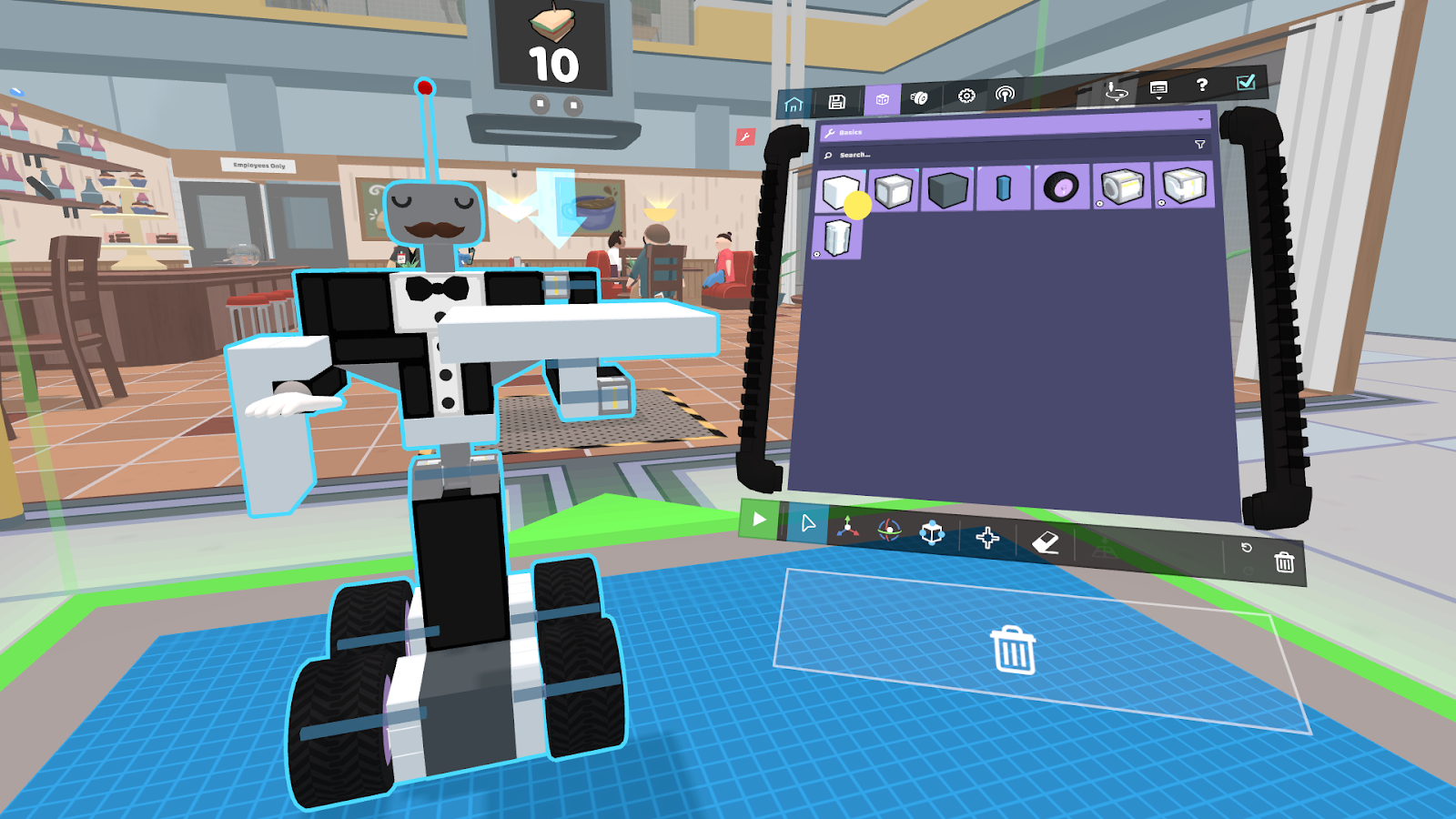VR and AR have the potential to change so much about our workforce – and in many fields, it already is! From the game industry to healthcare to art and design, advances in VR and AR technology offer truly immersive ways to learn, train, and work.
One of the most exciting and impactful applications of these immersive technologies (and perhaps the one closest to our hearts – read on to find out why!) is in STEM fields. In this blog post, we’ll explore how VR and AR are making STEM education more hands-on than ever before.
via Giphy
If you’re here, you must be passionate about the intersection of learning and technology. Our Facebook and X (formerly Twitter) accounts post daily insights and updates on the latest in edtech and game-based learning, so if that sounds like your thing, follow us before reading on! Don’t forget to bookmark this page so you can easily find it later.
Bridging the gap between theory and practice
Traditional methods of education often struggle to bridge the gap between theoretical knowledge and practical application. Students learn complicated concepts from textbooks and lectures, but may find it challenging to grasp their real-world relevance. VR and AR technologies bring these abstract concepts to life by creating immersive, interactive experiences. This is especially important for STEM learning, where many jobs make use of all sorts of complex equipment and take place in settings like laboratories.
In an effort to bridge this gap, the University of Rochester is using AR technology to simulate working at a chemical plant. In this innovative teaching experiment, students used coffee mugs and popsicle sticks on a glowing tabletop to simulate reactions that might take place in a chemical plant. This hands-on and collaborative approach provides students with a unique learning experience that’s very different from reading a textbook, allowing them to adjust reactor temperatures and observe the effects of chemical reactions in real time.
via University of Rochester
Meanwhile, Simran Sharma, an obstetrics and gynecology clinician, recently worked on a VR education tool for sepsis recognition. Medical students can use VR headsets to interact with realistic medical scenarios, improving their diagnostic skills and clinical knowledge. VR offers a standardized and repeatable clinical training method, making it especially valuable for medical education.
As a final example, there’s RoboCo, our sandbox robotics game set to launch for VR in 2024. RoboCo VR will be a groundbreaking tool for bridging the gap between robotics theory and practical application. By immersing players in a playful yet educational environment, RoboCo allows users to design, build, and experiment with robots of their own creation. This hands-on experience will enable players to grasp complex robotics concepts, test their ideas in a virtual world, and observe real-time interactions.

By engaging students in hands-on, active experiences, they gain a deeper understanding of complex STEM concepts and can better retain the knowledge acquired. Immersive learning experiences can make learning more relevant to real-world scenarios, ultimately preparing students more effectively for the demands of STEM-related careers.
Overcoming physical constraints
In many cases, practical STEM education can be limited by resources, equipment, and access to physical laboratories. VR and AR eliminate these barriers by providing virtual environments where students can conduct experiments, manipulate objects, and solve problems without the need for expensive equipment or physical spaces.
For example, Stephen Hilton at University College London has established a virtual lab that mirrors his physical laboratory, enabling students to conduct experiments and assignments using VR headsets. This immersive environment not only enhances the learning experience but also makes science more accessible by accommodating limitless numbers of learners. Hilton’s virtual lab also features AI assistants to guide users and answer questions.
This virtualization of labs and experiments works to democratize STEM education, making it accessible to a broader and more diverse range of students, regardless of their geographical location or economic background. It also reduces the risk associated with certain experiments, allowing students to explore potentially dangerous concepts in a safe virtual environment.
Preparing students for the future
As the world becomes increasingly technology-driven, STEM skills are in high demand across various industries. VR and AR technologies not only make STEM education more engaging but also equip students with essential digital literacy and problem-solving skills that are vital in the 21st century.
One notable example of VR’s ability to foster future-facing skills can be found at the Plainview-Old Bethpage Central School District in New York, where middle- and high-school students use zSpace desktop virtual reality technology. zSpace allows students to interact with 3D models, such as dissecting a frog or studying the human heart, all without the need for physical equipment setup. This platform allows students to easily work together on STEM concepts like Newton’s laws of motion, electrical circuits, and more.
By integrating these technologies into the classroom, educators are helping students develop the skills and mindset needed to thrive in the rapidly evolving STEM landscape. This, in turn, enhances students’ career prospects and prepares them to tackle the complex workplace challenges they may encounter in the future.
VR and AR are transforming STEM education by making it more hands-on, accessible, and effective. As VR and AR technology continues to advance and become more widely approachable and accessible, we expect to see even more innovative applications in STEM education that will allow and empower students to explore, discover, and excel in STEM. The future of STEM education is looking brighter through VR goggles!
If you also believe in a future of immersive learning and want to create an impactful educational game, we’ve been waiting to hear from you! Contact us today and let’s chat about your project and ideas.
More on VR and AR for learning: